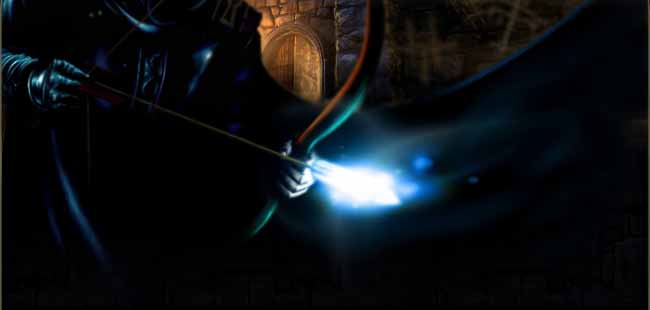|
|
|
|

The Order of the Gear is a splinter group of the Hammerites formed by Karras - a MasterForger of the Hammerite Order. The Order and its members are popularly known as Mechanists and are responsible for numerous innovations and devices introduced to the City. Among these include a more efficient lighting and power system, automated security systems, and the Builder's Children. The Order was disbanded after three years following the death of Karras during an unsuccessful plot to annihilate the inhabitants of the City.
For more information regarding the Plot of Karras, please see Chapter C.

The Order of the Gear was formed by MasterForger Karras after he and several followers left the Order of the Hammer six years ago (see An Overview of the Hammerite Order). Beginning with nearly a hundred members, the Order took the name of Mechanists and quickly grew to ten times that number. Within a year of leaving the Hammerites, Karras had surpassed his former brethren in both popularity and influence. This was done through a combination of ingenious politics and technological innovation.
Whereas the Hammerites preached primarily on the folly of sin and its many punishments, Karras and his priesthood concentrated instead on the positive side of serving the Builder. Many Mechanist sermons spoke of the love the Builder had for his children and the blessing he wished to bestow upon the faithful. As such, the Mechanists quickly became more popular than the Order of the Hammer, and most inhabitants of the City found themselves preferring the Mechanist message to that of the Hammerites. By preaching thusly, Karras understood the power it would gain his Order. This is discussed in greater detail later (see Religious Teachings). Religion was only a single facet of Karras' politics, however.
Karras also understood the nature of the City and often appealed to the greed and lust for power that is inherent in most of the City's aristocracy. Unlike the Hammerites, who believed that service was its own reward, Karras granted favors and gifts of value to those that supported he and his Order. At the time, Mechanist devices were a valued commodity within the City. By granting these devices to the wealthy of the City, Karras insured that he would maintain the support of the powerful and influential. Karras also insured that only his followers understood the workings of the devices, so that any who used them would be dependent upon the Mechanists to maintain the gifts and keep them working.
Unknown to his supporters, however, was the fact that Karras had an ulterior motive. With time it became apparent that Karras was quite mad and intended to destroy any living thing within the City. This plot brought about the eventual demise of Karras and his Order - a subject we discuss in detail in Chapter 6. The plot itself shall be discussed in more detail below. For now, however, we shall discuss the projects most vital to the history of the Mechanists.

Perhaps the most ambitious of the various Mechanist projects, the Cetus Amicus project centered around the construction and use of an underwater vessel named the Cetus Amicus. Resembling a large metal fish, the vessel was completely contained and air tight, thus enabling it to travel underwater. Such travel was usually undertaken by night, lest the construct was seen prematurely. Such sightings did occur, however, even at night, as is evidenced by the rumors that persist to this day of a giant steel-scaled behemeth living in the Bay. Only once was the vessel seen by a Harbor Patrol, and the resulting skirmish proved that the Amicus was impervious to both harpoons and cannonfire before it once more slipped beneath the waves. It is known to us, however, where the vessel laid while at rest. It was constructed and birthed at an underground facility located beneath Markham's Isle. There the Mechanists had constructed support structures for the vessel and its crew which included barracks, offices, and storage facilities. Fortunately, the vessel never reached its true potential as a war device, but was used instead for the transportation of supplies to and from the KD site, which is what we shall discuss next.

Considered by many Mechanists to be the greatest discovery of their time, the ruins of Karath-Din provided the Mechanists with concepts and technology they would not have conceived of otherwise. Despite what safeguards were placed on the entrances to the ruins, there are many ways in and out of the Lost City. Of course, the existence of the City has been known to the upper echelons of the Hammerite Order for some time, since even before the Dark Project incident. It was decided by the Priesthood, however, that the Precursors had been punished by the Builder and any advances gained by their study were therefore corrupt as well. As a MasterForger of the Order, Karras had access to this knowledge but apparently felt differently regarding the study of the ancient ones. It is possible that this was even a point of contention resulting in the schism. At any rate, one of the first major projects Karras initiated after forming the Order of the Gear was the excavation and study of Karath-Din. This study resulted in numerous advances in Mechanist technology. Besides the discovery of numerous masks and other artifacts used in the Servant Process, the Mechanists also discovered the motion detection technology later employed in the Watchers and Builder's Children. Even more vital to the history of the Order - especially so its demise - was the discovery of the Necrotic Mutox.

The Necrotic Mutox was a substance used by the Precursors for an unknown reason. The popular theory believes it was used for the clearing of unwanted vegetation or pest infestations. In the hands of Karras, however, it became a deadly weapon. An orange-colored gas, the Mutox (as it was named by Karras) instantly breaks down organic material upon contact. Any such material is then reduced to a fine powder resembling rust. This substance was at the heart of Karras' plot to destroy the City. For more information, please see Chapter 6. Another component vital to the plot was the the Servant Process.

The Servant Process was a program developed by Karras in which an individual is subjected to various chemical compounds and conditioning. The end result of the process is a living automaton subject to programmed commands - much like the Builder's Children. Individuals subjected to this process obeyed only the commands programmed into them and were used primarily as servants. In fact, Karras often called them the "Builder's Servants", or just Servants, and gave them away as gifts to his more generous supporters. More information regarding the Servants can be found in the Courtyard. Karras also ensured a steady supply of "source material" for the Servant Process by allying himself with the Sheriff of the City Watch.

During the second year of the Mechanist Order, Karras formed an alliance with Sheriff Gorman Truart. A vain and sadistic man, Truart readily complied to Karras' offer. In exchange for Mechanist support and equipment, Truart would provide the Mechanists with vagabonds, prostitutes, and other criminals arrested on the streets of the City. Truart was also paid a great sum of money to step up his aggression towards the Pagans - a group that Karras despised with great passion. Through this alliance Karras also ensured that the Mechanists would be able to pursue their less savory activities without intervention from the Watch.
Now we shall discuss the heart of the Mechanists - Karras himself.

To truly understand the Mechanists, one must first understand Karras. To this end, we have thoroughly researched the life and history of Karras. It is here that our findings will be presented.
Karras was born the ninth child of thirteen to a metalworker and his wife living in the crowded district of Shoalsgate. Like his brothers, Karras apprenticed with his father until his coming of age at seventeen. It is apparent by our research that the young Karras' life was fairly uneventful up to this point, with the only exception being three beatings at the hands of local toughs. Such things are common among the children of the City, however, and would be overlooked by most. The true turning point of young Karras' life appears to have arrived with a Hammerite recruitment lecture near his home. Shoalsgate is one of the few districts in the City with very little Hammerite presence. It is entirely possible that Karras had reached young adulthood without knowing much of the Order. It is known that Karras attended the lecture that day, and neighbors remember a heated argument that night between the young man and his parents. It is our belief that Karras was smitten with the doctrine of the Hammers and wished to join their Order - most likely something the parents wished to avoid. At any rate, we have found that Karras left his home the next day and never returned. His whereabouts for the next two years are unknown, but we have documented that he did not join the Hammerite Order until that time had ended. All inquiries into the missing two years have yielded no results and it is believed that Karras was somewhere outside the City during that time.
Upon returning to the City, Karras immediately joined the Order of the Hammer. After joining the Order, Karras quickly proved a quick learner and a deft mind when working with metal. His instructors recommended him for brotherhood after only three years of novice study. Another eighteen saw his raised to the level of MasterForger. Thus at forty years of age Karras became the third youngest MasterForger in the history of the Hammerite Order. Our agents report that many were astonished by the innovation of the young Master and yet also that he was often chastised by the Priesthood for what was deemed "heretical comments." The exact comments were not recorded on paper and are thusly unknown to us. It is believed that Karras became disenchanted with the Order not long after his ascension to MasterForger. Our first documented account of his dissension was two years later when he approached one of our agents with a plan to leave the Order. Thus began the Hammerite Schism.
Karras waited and bided his time. Over a period of four years, he recruited several followers and convinced them to support him and follow when he eventually left the Order of the Hammer. When the Downtowne Temple was destroyed during the Dark Project incident, Karras used the event as a rallying point of sorts, leading many to believe it showed how weak the Hammerites had become. When he learned of Garrett's role in destroying the Trickster, Karras offered to build a replacement eye for the thief. This offer was strangely out of character for Karras, and it is still not known to us what motivated him to do so. It is possible that Karras saw it merely as a challenge to his skill since many of his fellow Masters said it could not be done. After all, the human eye is so intricate and complex - how could any man design and build such a device? Karras did, however, and it was after this feat that he announced his intentions to leave the Order.
There were, of course, discussions within the Hammerite Priesthood of stopping Karras or placing sanctions on him, but the severity of the situation soon became apparent even to them. Along with Karras, nearly a hundred others left the Order of the Hammer and formed a new Order of the Gear. The Hammerite Priesthood ultimately decided to ignore these new "Mechanists" and pretend that the Schism never happened. Less than six months afterwards, however, the Order of the Gear could no longer be ignored after tripling its numbers and growing steadily. A year after the schism, the Mechanists were a thousand strong and had drawn even more Hammerites into their ranks. The Order of the Hammer found itself shrinking while Karras and his Order grew steadily.
The first two years of the Mechanists saw a constant emphasis on two agendas - development of new technologies and the creation of public support. Karras found a new medium for his creative energies and began to produce his own scripture and interpretation of the Builder's word. For examples of such writings, please see Appendix C. He also enjoyed the adoration of the public and his own Order, speaking in public on many occasions. However, in the last days of the Order during its third year, Karras had little interaction with the living and instead spent his time surrounded by the Children and his other constructs. This change in his behavior was noticed by some within the Order and caused great concern. Even those within the Order, though, could not forsee the cataclysmic event ahead.
To learn how the story ends, one must skip ahead to Chapter 6.

The heirarchy of authority within the Order of the Gear is similar to that of the Hammerites wherein Karras himself assumes the responsibility of the Master level. The Order is comprised of three levels - Novice, Friend, and Karras.

Novices are the lowest-ranking members of the Order and are usually apprentices or those who have recently joined the Order. Unlike in the Hammerite Order, novices are typically treated as near-equals and must apprentice for only six months or so before being elevated to the level of Friend, or full-fledged member of the Mechanists.

Nearly all Mechanists encountered were called Friends and were full members of the Order. Both genders could be found in Karras' new Order, and the gender-specific honorific "Brother" was therefore replaced with this gender-neutral title. The system of authority could be very confusing to those outside the order since any member of the order, regardless of rank or seniority, is given the honorific of "Friend".

Unlike the Order of the Hammer, the Mechanists possessed no Master level. Priests in the Order were few and were not given a title that differentiated them from any other member of the Order. Instead, the highest level was represented by Karras himself, whom the Mechanists revered as "Father Karras". Many within the order treated Karras as if he were the right hand of the Builder himself - a view which Karras seemingly encouraged, especially in the last year of the Order. All tenets were passed down from Karras to his elder members - the original hundred which left the Hammerites with him. For more information regarding specific individuals within the Order, see Appendix B.

The Order of the Gear were not all that different from the Hammerites in their interaction with the City. This interaction typically took one of two forms - economic and religious. Beyond these two, the Mechanists usually remained within their own compounds and facilities.

The chief form of interaction the Mechanists had with the City and its inhabitants were through economic contributions. Whereas the Hammerites provided tools and other constructed crafts, the Mechanists offered a variety of technological innovations and wonders. Although such innovations were many, the most popular was by far the Watcher - a rotating mechanical head which could detect motion and activate alarms or other security systems upon sight of an intruder. Other contributions included improved electrical lights, electrical security systems, and the Builder's Children.

Although the Order of the Gear was rooted within the religion of the Builder, most teachings and scriptures of the Order were delivered directly from Karras himself. Karras preached that the love and blessings of the Builder were for all to partake of, if only they would server the deity and perform his will. Karras also taught that all are equal within the sight of the Builder - a claim he endorsed by allowing woman to join the Order on equal footing with men. He also taught that no innovation or creation could be considered anathema if done in the Builder's service. As time progressed, however, we learned that these were not the only beliefs of Karras. He also believed that the Builder was returning to our world and had given the Mechanists a mandate to create his paradise to receive him. Furthermore, Karras believed this "paradise" could only be brought about with the total destruction of all things organic (except himself, of course). To this end he initiated a plot wherein he would spread the Necrotic Mutox throughout the City and destroy all life within it (see Chapter 6).
For more information regarding the religious teachings of Karras, please see Appendix C.

Unlike the Hammerite Order, the Mechanists appeared to have very little interest in the judicial affairs of the City. The only exception to this was the alliance between Karras and Sheriff Gorman Truart (see reference above).

Like the Order of the Hammer, the Mechanists combine their religious doctrine with martial preparedness. Karras and his Order, however, seek to destroy the Pagans with a passion far beyond that of the Hammerites. Therefore they equip and carry themselves accordingly.

Mechanist armament is very similar to that of the Hammerites. Most Mechanists can be seen wearing light plate armor. The red and silver livery of the Hammer, however, has been replaced with the teal and gold of the Gear. Those Mechanists who were assigned to the Cetus Amicus Project (see reference above) could be seen wearing diving suits of the Order's own design - form-fitting suits of a strange black material with golden armament. These suits, when combined with a helmet, apparently allowed one to remain underwater for longer periods of time than usual. Priests of the order could be found wearing flowing robes similar to those of the Hammerite priesthood. Lastly, it is known that some Mechanist workers and foremen could be found wearing a form of worksuit accompanied by what was called a "hard hat". Lacking armament at all, these suits apparently assisted one in the physical requirements of whatever project was at hand.

Mechanists forgoe the typical Hammerite weapon - a hammer - in exchange for a mace. These maces possessed a head in the shape of a four-sided gear and could applied with force and speed to kill an enemy. When range was a requirement, Mechanists carried another device of their own design - a "crossbow". These small hand-held bows could fire a small arrow at great speed and distance, making them much more efficient than the normal bow.

Mechanist tactics have changed little from those of the Hammerites. Those Mechanists carrying a mace are quick to charge an enemy with full intent to crush using the melee weapon. Those with the crossbow, however, will typically remain at a distance and fire at the enemy until they are no more.
For more information regarding Mechanists as an enemy or obstacle, please see their profile within the Enemies area of the Courtyard.

With time it became apparent that Karras was quite insane. Throughout the three years of the Mechanist Order, the various projects and plans initiated by Karras began to form a plot that would spell doom for the City if seen to completion. The Servant Process, the Karath-Din Artifacts, the Necrotic Mutox, even the Builder's Children, were all part of a larger scheme by Karras to bring about the Builder's Paradise.
By reading Karras' "New Scriptures of the Master Builder" it is obvious that he had formed this plan at least by the second year of the Mechanists. The plan itself was broken into three stages. First, the Cetus Amicus was used to excavate the ruins of Karath-Din. The technology found there was then used to create the Builder's Children - constructs which Karras believed to be ultimate extension of the Builder himself. These mechanical beings were intended to the new populace of the Builder's Paradise and would greet him when he arrived.
Secondly, each mask worn by a Servant was fitted with a duplicate of the Cultivator device found in Karath-Din as well as a small container of Necrotic Mutox gas. Thus each Servant was capable of releasing enough gas to kill every living thing within a league. By distributing the Servants among the City's wealthy and affluent, Karras ensured that each district of the City would be blanketed with enough to leave nothing organic. With the press of a button, Karras could command the Servants to release the gas whenever he was ready.
Lastly, the Mechanist fortress known as SoulForge Cathedral was outfitted with valves and seals on all doors and windows so that the entire complex could be made air-tight on command. Furthermore, a room was constructed within the Cathedral wherein Karras himself would dwell and survive the catastrophe. It was here that Karras placed the controls by which he would release the Necrotic Mutox throughout the City. His plan was to annihilate all life within its borders, after which he and the Builder's Children would emerge to remake the City in the Builder's image. Despite efforts to destroy any opposition, Karras underestimated the abilities of a thief named Garrett.
Karras' first mistake was to set Gorman Truart and the City Watch upon Garrett so that he would not interfere. Having firsthand knowledge of Garrett from the Dark Project incident, Karras apparently saw the thief as a threat and wished to remove it before initiating his master plan. The attention forced Garrett into an alliance with the Pagans, however, and Karras soon found his enemies interfering more than ever. Once the fullness of Karras' plot became apparent, Viktoria (see A Compedium of Significant Individuals) took it upon herself to attack SoulForge. In the resulting battle, Viktoria was killed and a vengeful Garrett found himself in a position to end the threat of Karras once and for all.
From within SoulForge, Garrett was successful in re-aligning the command system of the Cathedral so that all Servants returned to the complex. Unbeknownst to Karras, all Servants returned to SoulForge before he sealed the Cathedral and released the Necrotic Mutox. Thus the effects of the gas were contained within the Cathedral and the only deaths caused were those of Karras and his devoted followers who had undergone the Servant Process. The Mechanists, of course, attempted to hide the death of their leader with misinformation. It was decided by the Keeper Council soon after, however, to anonymously release the truth of the matter.
Once this plot was made known, the Mechanists became a blight upon the City. They were ignored when possible, and hated in secret. And sometimes in public as well. During one incident several Mechanists were sighted in the street and beaten to death by an angry mob before the City Watch could respond. Although the only incident of violence resulting from the news, the event made it painfully obvious to even the Mechanists that they would never be welcome again in the City. Thus the Order was disbanded and its members left with nothing. Yet some clung to hope - hope that the Hammerites would take them back. Most of the Mechanists who had left the Order with Karras originally petitioned for readmittance into the Order of the Hammer. Although the subject was debated at some length by the Hammerite Priesthood, the petitioners were eventually allowed to rejoin and submit to whatever penance the Order decreed. Thus the Order of the Gear and the legacy of Karras passed into history.

The following section profiles the various Mechanist facilities that were located throughout the City. All of the facilities listed here have been either purchased by the Hammerites or a third party, or destroyed outright by the City. Like those of the Hammerites, all Mechanist facilities were constructed of stone and metal. Unlike the Hammerites, however, there was no wood or thatch to be found in any Mechanist facility. Karras apparently found such organic substances abhorrent.

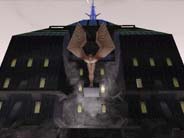  |
Primary Function: Offices Secondary Function: Barracks/Guest Accomodations Location: Downtowne Comments: The official headquarters of the Order, Angelwatch was an enormous structure which could be seen from anywhere in the City. Eclipsing even the Stonemarket Clocktower, the multi-storied building could accomodate over a hundred guests as well as an equal number of Mechanists. Angelwatch was designed for a single purpose - to impress. Karras used the building for all public functions and such is apparent when viewing the layout of the building. Following the disbanding of the Order, the tower was torn down by order of the City Council - although it is said that the Hammerites influenced this decision. |

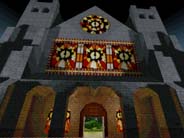 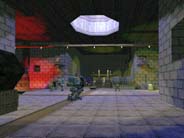 |
Primary Function: Factory Secondary Function: Temple Location: Downtowne Comments: Whereas Angelwatch was the public and official headquarters of the Order, SoulForge Cathedral was surely its heart. The preferred home of Karras, SoulForge is actually less of a church and more of a sprawling factory complex. It was here that Karras spent his final hours as he prepared to release the Necrotic Mutox. The entire complex could become airtight upon command, and nearly all functions of the building were automated. After the death of Karras, SoulForge was purchased by the Order of the Hammer and left to ruin as an example to others. Any salvageable equipment was removed, of course, but the building itself stands still and silent on the outskirts of Downtowne. Repeated attempts by the City Council to have it destroyed have fallen upon deaf ears within the Hammerite Order. Only time will tell how long it sits empty and unused. |

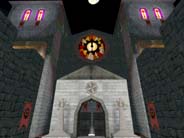 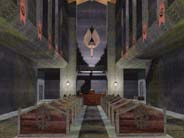 |
Primary Function: Temple Secondary Function: Servant Creation Location: EastPort Comments: The Mechanist temple located in EastPort served two functions - publicly it was a former Hammerite temple which had been converted by the new Order of the Gear. Privately, however, the temple also served a secondary, far more sinister purpose - the creation of Servants. It was here that the City Watch delivered sedated criminals for use in the Servant Process. A small room within the walls of the compound contained holding tanks and equipment used to convert the subjects into the obedient Servants. On days of worship, the public was allowed to attend sermons here and at a few other Mechanist temples and compounds, although the EastPort Seminary was the largest of these. The compound was claimed once more by the Hammerites following the fall of the Mechanists. |

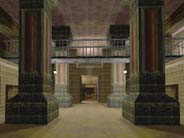 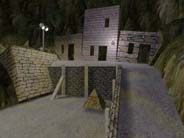 |
Primary Function: Excavation Site Secondary Function: None Location: Karath-Din Comments: Located within the ruins of Karath-Din, the Mechanist facility known as "The KD Site" was actually an excavation site wherein the Mechanists searched for archeological artifacts and studied the technology left behind by the Precursors. In the process of creating the site, the Mechanists cleared the Lost City of many dangers including the Fire Elementals and Burrick colonies which had inhabited it previously. The ruins were then sifted through and studied in great detail by Mechanist engineers. Chief among these was a man named Cavador - an individual more concerned about the history of the city than the plans of Karras. Cavador continues to garner interest, and more about both him and the Lost City can be found in our study of the Precursors. |

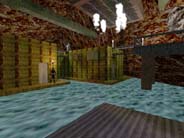 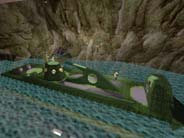 |
Primary Function: Support of Cetus Amicus Secondary Function: None Location: Markham's Isle Comments: Located in the caverns and tunnels beneath Markham's Isle, this facility was constructed for a single purpose - the construction and support of the Cetus Amicus vessel. The caverns which house the facility also house a base once used by Captain Markham - the local legend which the island is named after - and his crew of pirates. Thus the area is a strange amalgam of ancient and new - the wooden shanties and planks of the pirate base combined with the gleaming metal construction of the Mechanists. The layout of the base is far more haphazard than other Mechanist facilities and is centered around the cavern which houses the Cetus Amicus. It has lain undisturbed since the fall of the Order and remains there still. |

This appendix lists those Mechanists who had a significant influence on the events of the Metal Age.
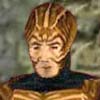 |
Karras, Father The founder and leader of the Mechanists, Karras was a smallish man of middle age. Known for his high-pitched and nasal voice, Karras nonetheless was a man of great intellect and charisma. He lead the Order of the Gear almost single-handedly, with very little delegation of authority. As time progressed, it became apparent that Karras was mad. He began to believe that only beings of a mechanical nature could truly serve the Builder and therefore designed a plan to kill anything organic within the confines of the City. This plot resulted in his own death within SoulForge Cathedral when he was exposed to the Necrotic Mutox after its release. |
 |
Cavador, Brother Cavador was one of the original hundred who left the Order of the Hammer with Karras. Unlike many of these individuals, Cavador's reasons for leaving were well-known. While in the Order of the Hammer, the MasterForger had been an outspoken opponent of the Council's policies and limitations regarding research and new innovations. When promised by Karras a chance to study the wonders of Karath-Din, Cavador could not refuse. Cavador was an exception among the Mechanists as he was known by the honorific "Brother" instead of "Friend". This was apparently due to the fact that the elder was well-liked and even loved among those he worked with. Following the fall of the Mechanist Order, Cavador chose not to rejoin the Hammerites but instead garnered a position with Wieldstrom where he now studies and preserves artifacts. |
 |
Vilna, Friend Very little is known about Vilna save that she was entrusted with the care of AngelWatch while Karras was away. This fact appear to place her at a high level within the Order, but details of her rise are unknown. All our agents have been able to determine is that she was one of the first women to join the Mechanists after their formation and that her training as a priestess was undertaken by Karras himself. The facts appear to indicate that Vilna was known to Karras prior to his formation of the Order, but any theories as to how are mere speculation. It is known that Vilna strongly opposed the disbanding of the Mechanists and disappeared shortly thereafter. We have since learned that she now operates a small bookstore in the StoneMarket district. |

The religious tenets of the Mechanists were based on the Book of the Stone - the original canonized tome of the Hammerites - but also heavily relied on the teachings of Karras. During the final year of the Mechanists, Karras also wrote several chapters of what he called "The New Scripture of the Master Builder". This "new scripture" outlined Karras' plan to destroy the City and is kept now as an example of his insanity.

